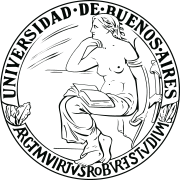Broadening the Scope of Differential Privacy Using Metrics
| Title | Broadening the Scope of Differential Privacy Using Metrics |
| Publication Type | Conference Paper |
| Year of Publication | 2013 |
| Authors | Chatzikokolakis, K, Andrés, ME, Bordenabe, NE, Palamidessi, C |
| Editor | Cristofaro, ED, Wright, M |
| Conference Name | The 13th Privacy Enhancing Technologies Symposium |
| Publisher | Springer |
| Conference Location | Bloomington, Indiana, United States |
| Abstract | Differential Privacy is one of the most prominent frameworks used to deal with disclosure prevention in statistical databases. It provides a formal privacy guarantee, ensuring that sensitive information relative to individuals cannot be easily inferred by disclosing answers to aggregate queries. If two databases are adjacent, i.e. differ only for an individual, then the query should not allow to tell them apart by more than a certain factor. This induces a bound also on the distinguishability of two generic databases, which is determined by their distance on the Hamming graph of the adjacency relation. In this paper we explore the implications of differential privacy when the indistinguishability requirement depends on an arbitrary notion of distance. We show that we can naturally express, in this way, (protection against) privacy threats that cannot be represented with the standard notion, leading to new applications of the differential privacy framework. We give intuitive characterizations of these threats in terms of Bayesian adversaries, which generalize two interpretations of (standard) differential privacy from the literature. We revisit the well-known results stating that universally optimal mechanisms exist only for counting queries: We show that, in our extended setting, universally optimal mechanisms exist for other queries too, notably sum, average, and percentile queries. We explore various applications of the generalized definition, for statistical databases as well as for other areas, such that geolocation and smart metering. |
| URL | http://hal.inria.fr/hal-00767210 |
| DOI | 10.1007/978-3-642-39077-7 |
Work Package:
WP3













